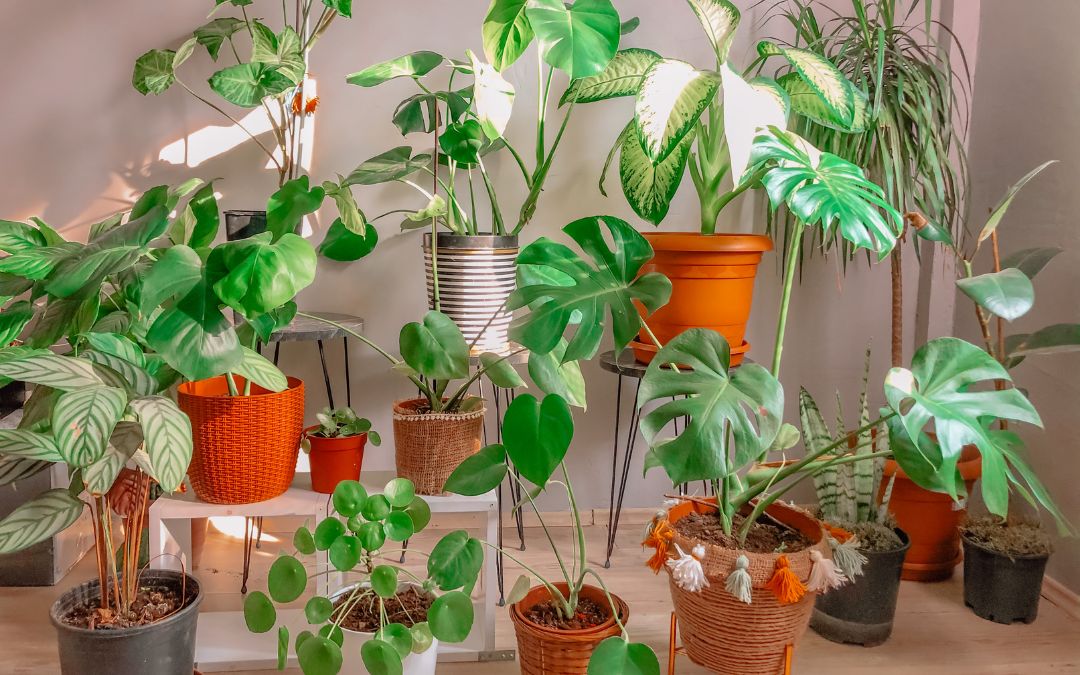What’s not to love about plants? They are beautiful to look at, help relieve stress, nurture a sense of calm, and offer various mental and physical health benefits. If you’re a plant enthusiast, keep them in your apartment at Vineyard Senior Living for a touch of wellness and comfort.
Indoor Gardening for Beginners
While some plants can thrive indoors, others are not quite as adaptable. It’s more challenging than it looks to create the right conditions a plant needs to stay alive. So, which plants should you grow? What are the most effective ways to care for them? Here’s all you need to know about indoor gardening for beginners:
Choose Low-Maintenance Indoor Plants
To become a successful indoor gardener, your first step is to choose the right plants. Find resilient, low-maintenance species that can survive with minimal direct sunlight or natural rainfall. These plants can purify the air and spruce up your home décor but are better suited to the indoors:
- Aloe Vera
- Succulent
- Zanzibar Gem
- Snake Plant
- Dracaena
- Rubber Tree
- Bird’s Nest Fern
- Pothos Ivy
Be Intentional About the Quality of Soil
All plants need high-quality, nutritious soil to bloom healthily. Still, the particular soil you choose will often differ from one species to the next. So do research ahead of time to determine which ingredients your plants require.
Most soil mixtures include perlite, vermiculite, and peat moss, enriched with phosphorus, calcium, nitrogen, potassium, sulfur, and magnesium. Some indoor gardeners will also infuse organic compost into the soil for even more nutrients.
The texture and moisture content of your soil matter, too. For instance, plants native to drier regions—such as succulents and cacti—need coarse ground that absorbs water quickly. In contrast, plants that grow in temperate climates require a lighter soil blend. In most cases, you can buy pre-made soil blends to make it easy!
Determine How Much Light Your Plants Require
Light is another factor that can make indoor gardening for beginners feel complicated. Some plants can thrive without much access to light, while others must be under a light source for 6–8 hours each day. However, all plant species require at least some degree of light.
Natural sunlight is ideal, of course, so allow your plants to grow near a window if possible, but an artificial LED plant light can also do the trick. Experiment with different locations and light sources around your apartment until you find the right spot.
Also, remember that you’ll need to move certain plants based on the season. During winter, for instance, some varieties require more direct light than they otherwise would in a sunnier time of year.
Water Your Plants Correctly
Achieving the perfect balance of water frequency and amount can be challenging even for experienced gardeners. If it takes trial and error to figure out the correct ratio for your plants, don’t stress—you will learn with practice.
The key is to avoid watering them either too much or not enough. As with soil and light, this will often be specific to each unique plant variety. Some need water several times a week, while others will be susceptible to root damage if you water them more than once a week. In some cases, like with desert species, you may only need to water a few times per month.
A helpful barometer when determining how often to water your plants is to check the soil. If it looks damp, allow the excess moisture to absorb entirely before continuing, but if it looks parched, reach for that watering can. If the leaves seem to wilt or droop, that’s also a strong indication that your plant can use some H2O.
Follow these Tips to Master Indoor Gardening for Beginners
Decorating with plants is an excellent way to infuse color and life into any interior space. Here at Vineyard Senior Living, we think connecting with nature is vital for optimal well-being—it’s even one of our core values. If you want to learn a new hobby and acquire a green thumb in the process, these indoor gardening for beginners tips have you covered.

